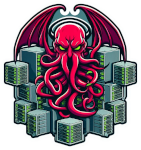
DRBD, which stands for Distributed Replicated Block Device, is a software-based, shared-nothing, replicated storage solution for mirroring the content of block devices (such as hard disks, partitions, logical volumes, etc.) between servers. It is often used to build high-availability (HA) clusters and is integrated into the Linux kernel, making it a robust and efficient tool for data replication and disaster recovery.
The Purpose of DRBD
The primary purpose of DRBD is to ensure data redundancy and high availability. In essence, DRBD replicates data across multiple servers in real-time, ensuring that any write operation performed on the primary server is also executed on the secondary server. This mirroring capability is crucial for maintaining data consistency and integrity in the event of hardware failures or other disruptions.
Key Features of DRBD
1. Real-Time Replication
DRBD provides real-time replication of data between servers. As soon as data is written to the primary server, it is immediately copied to the secondary server. This ensures that both servers have identical data at all times.
2. High Availability
By maintaining an up-to-date copy of data on multiple servers, DRBD enables high availability. If the primary server fails, the secondary server can quickly take over, minimizing downtime and ensuring continuous service availability.
3. Flexibility
DRBD can be used in a variety of configurations, including:
- Primary/Secondary (Active/Passive): One node is actively serving data while the other is a standby.
- Primary/Primary (Active/Active): Both nodes are actively serving data, typically used with a clustered file system that supports concurrent access.
4. Integration with HA Solutions
DRBD integrates seamlessly with high-availability clustering solutions such as Pacemaker and Corosync. These tools provide advanced features like automatic failover, resource management, and monitoring, enhancing the overall robustness of the system.
5. Disk-Level Mirroring
DRBD operates at the disk level, making it transparent to higher-level applications and file systems. This means it can be used with any file system and does not require modifications to applications.
How DRBD Works
DRBD works by intercepting write operations at the block device layer. When an application writes data to the primary server, DRBD intercepts this write operation and ensures that the data is written to both the primary and secondary servers before acknowledging the write completion to the application. This ensures data consistency across the replicated servers.
Write Operation Flow:
- Write Request: An application writes data to the primary server.
- Data Interception: DRBD intercepts the write request.
- Replication: DRBD replicates the data to the secondary server.
- Acknowledgment: Once the data is written to both servers, DRBD acknowledges the write completion to the application.
Read Operation Flow:
- Read Request: An application reads data from the primary server.
- Direct Read: The read request is served directly from the primary server's disk.
Typical Use Cases for DRBD
1. High Availability Clusters
DRBD is commonly used to create high-availability clusters where continuous service availability is critical. By replicating data across multiple servers, DRBD ensures that if one server fails, another can immediately take over without data loss.
2. Disaster Recovery
DRBD is an effective tool for disaster recovery solutions. In the event of a catastrophic failure, data can be recovered from the replicated server, minimizing data loss and downtime.
3. Cloud Storage Solutions
In cloud environments, DRBD can be used to replicate data across different geographical locations, ensuring data redundancy and availability even in the case of regional outages.
Conclusion
DRBD is a powerful and versatile tool for achieving high availability and data redundancy in Linux-based systems. Its ability to replicate data in real-time and integrate seamlessly with existing high-availability solutions makes it an indispensable component for building resilient and robust storage systems. Whether used in high-availability clusters, for disaster recovery, or in cloud storage solutions, DRBD provides the reliability and performance needed to ensure continuous service and data integrity.
